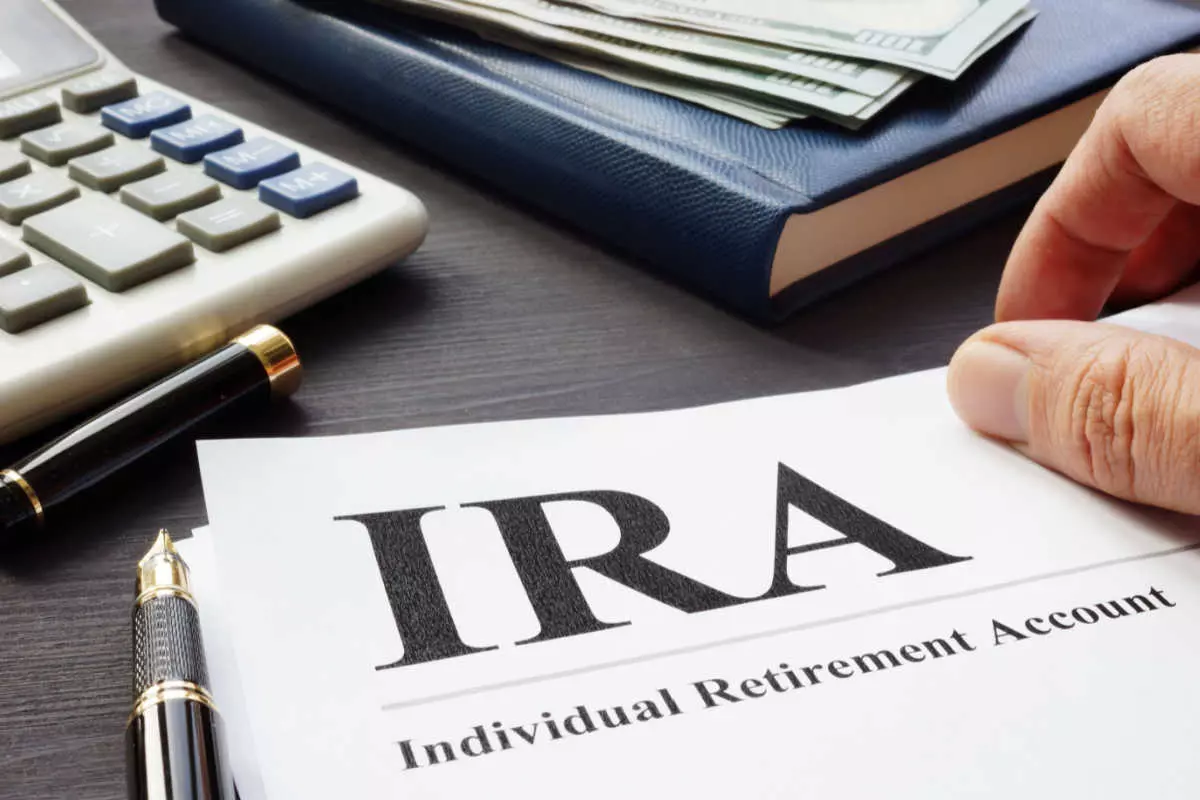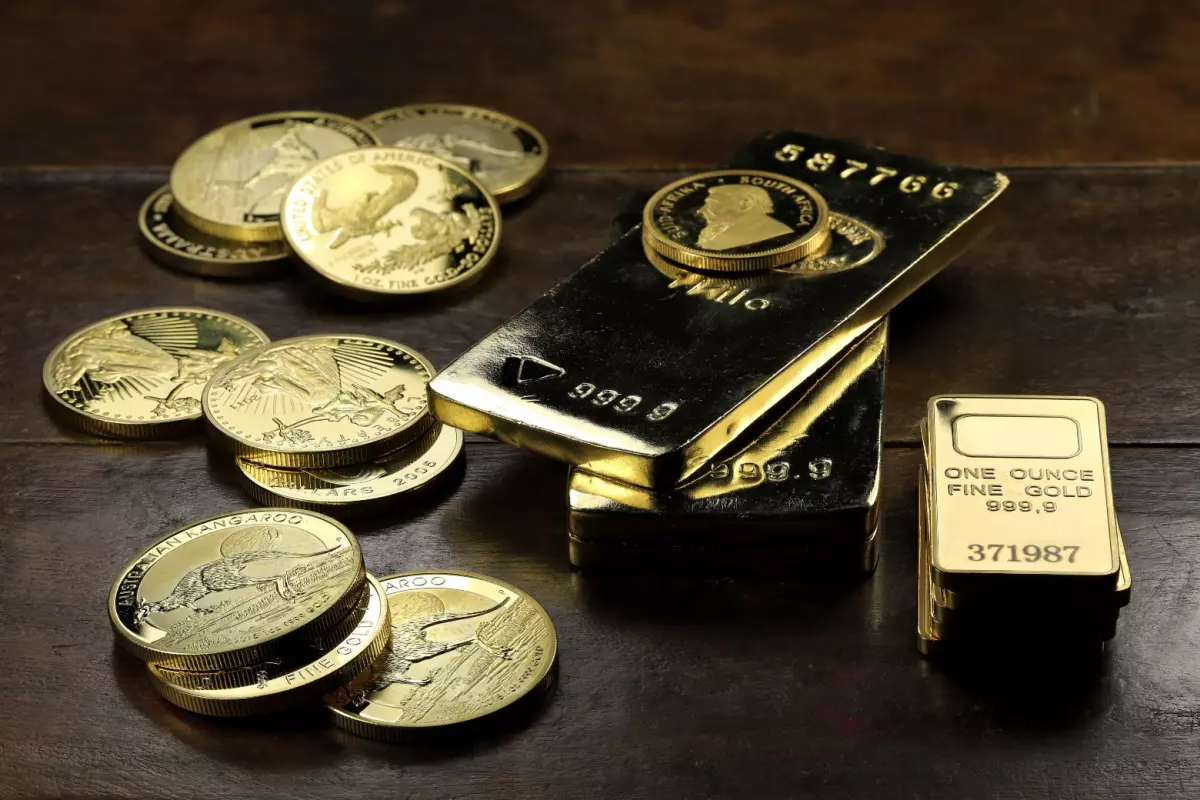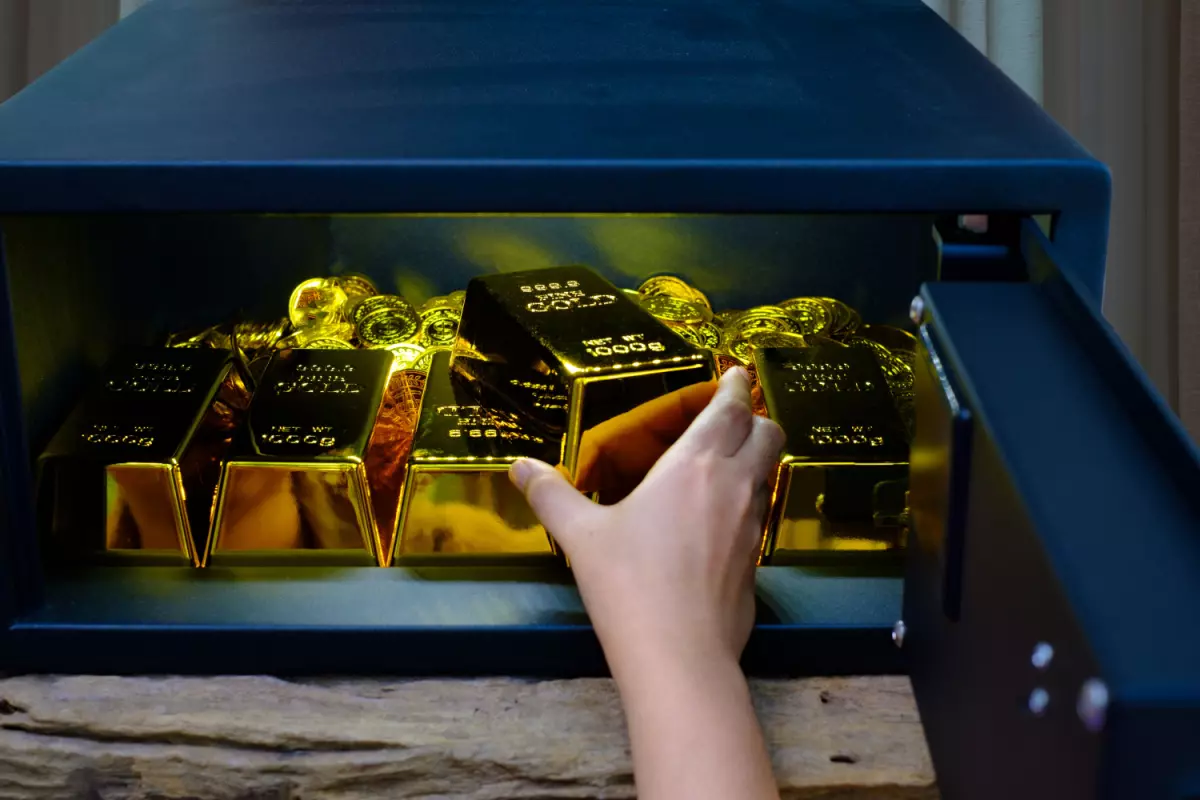Did you know that during the 2008 financial crisis, while the stock market took significant hits, gold prices soared, proving its stability in turbulent times? This is just one of the compelling reasons why gold IRAs are gaining popularity among those looking to bolster their retirement portfolios with something more resilient than traditional investment forms.
Whether you already have an IRA or are starting from scratch, this guide will give you the step-by-step process to convert your existing retirement funds into a gold IRA. We’ll explore everything from choosing a custodian to selecting the right precious metals, ensuring you make informed decisions every step of the way.
How to Convert IRA to Gold IRA
Moving your retirement savings from a traditional IRA to a gold IRA might sound complicated at first, but it’s pretty straightforward. However, there are a few nuances you need to know before starting the process.

Here are five simple steps to help you convert an IRA to gold.
1. Open a Gold IRA Account
After you review the best gold IRA companies and choose one, you will be ready to open a gold IRA account. A gold IRA differs from traditional or Roth IRAs primarily because it allows you to invest in tangible commodities like gold, silver, platinum, and palladium. But before you can choose the types of coins and bars to include in your gold IRA, you must first choose a custodian to open your account.
Not all banks or brokerage firms offer gold IRA services. You must select a certified custodian to handle precious metals or one that explicitly includes such options in their service offerings. Contact them through phone or online or visit their office in the vicinity.
Once you’ve chosen a custodian, complete the application forms. You must provide personal identification, financial details, and investment history. If you are rolling over an existing IRA, you’ll need to provide details and statements regarding the account and administrator. If you’ll fund your gold IRA via bank transfer, you must provide your account and routing numbers.
After submitting your application, the custodian will finalize the setup of your gold IRA. This process can take up to a few weeks. Once complete, you’ll receive confirmation, and your account will be ready for investing in gold and other precious metals.
2. Initiate the Transfer Process
Next, if you have an existing IRA, contact the administrator to initiate the transfer. Your administrator will request documentation to verify the transfer with the gold custodian. Your administrator may charge a service fee for the transfer of funds, which may vary from $25 to $100.
You will then be asked to fill out paperwork detailing your new gold IRA account, the amount you wish to transfer, and your authorization to complete the transfer. You can opt to move the entire amount or just a portion, depending on your investment strategy. This information must be accurately completed and verified by both the sending and receiving institutions before the transfer can be completed.
If you do not have an existing IRA account or will not be rolling over funds from this account, you can skip this step.
3. Transfer the Funds
You have two payment options to fund your gold IRA: transfer funds from an existing IRA or a bank account. If you transfer funds from another IRA, you must submit a transfer request to the administrator. It will specify the amount rolled over and your gold IRA account details.
The actual transfer usually occurs electronically, which is both secure and efficient. In some cases, especially for larger sums, your current custodian may mail a check to your new custodian.
If you transfer funds via bank, you can wire the funds directly to your gold IRA account.
Upon successfully transferring your funds, your gold IRA custodian will notify you that the funds have been received and are now available in your account. Once notified, log into your gold IRA account or request a statement to verify that the funds reflect accurately in your new account balance.
If the transfer seems to be taking longer than the estimated duration, don’t hesitate to reach out to both custodians for an update. Sometimes, simple issues like incomplete paperwork or miscommunication can cause delays that are easily resolved.
4. Select Your Precious Metals
With your funds successfully transferred, the next step is to select the precious metals that will comprise your portfolio. When choosing your assets, make sure they comply with the Internal Revenue Service’s (IRS) purity standards. Failing to comply with these regulations can result in taxes, penalties, and disqualification of your gold IRA.

The IRS has the following regulations:
- Gold must be 99.5% pure
- Silver must be 99.9% pure
- Platinum and palladium must be 99.95% pure
When choosing which types of gold to include, consider factors such as market liquidity, historical performance, and costs associated with different gold coins and bars.
For instance, some investors prefer coins like the American Eagle or Canadian Maple Leaf due to their government backing and wide recognition, which can increase liquidity. Alternatively, bullion bars might offer a cost-efficient choice due to lower premiums over the spot price of gold.
Many gold IRA custodians provide advisory services to help with this selection process. They can offer insights into the benefits and drawbacks of various gold products, ensuring your choices comply with IRS regulations and fit your investment strategy.
5. Store Your Metals Securely
Once you purchase your precious metals, you must store them securely to comply with IRS regulations. The IRS requires that all precious metals held in a gold IRA be stored in a secure depository, which is typically a third-party security facility that specializes in precious metal storage.
Some custodians may offer direct storage options or partner with specific insured depositories such as the Delaware Depository, Brink’s Global Services, and HSBC Bank USA. However, as an investor, you have the freedom to choose a storage facility that suits your needs, whether it’s one recommended by your custodian or another of your choosing.
You can choose between segregated storage, where your metals are stored separately from those of other investors, or commingled storage, where your assets may be stored alongside those of other customers.
Your gold IRA custodian will coordinate with the depository to arrange the transfer and storage of your purchased metals. Whether choosing your storage facility or one through your custodian, ensure your precious metals are insured. This protects your investment from theft or loss.
Why Consider a Gold IRA?
If you want to convert an IRA into a gold IRA, you’re choosing to diversify your retirement portfolio beyond traditional stocks and bonds.

These are some of the main benefits of a gold IRA:
- Hedge Against Inflation: Gold has historically maintained its value over time, rising by about five and a half times since 2001. As a result, it acts as an excellent hedge against inflation. As the cost of living increases, the value of gold also tends to rise, which can protect the purchasing power of your retirement savings.
- Diversification: By including gold and silver in your IRA, you diversify your portfolio beyond the usual equities and fixed income. This diversification can reduce your overall portfolio risk because gold often moves inversely to stock market fluctuations.
- Potential for Growth: While gold is often seen as a protective asset, it also has significant growth potential. Demand for gold grew by about 18% from 2021 to 2022 and continues to grow, especially during stock market downturns and recessions.
- Liquidity: Gold is a highly liquid asset that can easily be bought and sold. If you need to access your assets, you can sell your gold holdings quickly and with relatively low transaction costs, providing financial flexibility in retirement.
- Tax Advantages: A gold IRA enjoys the same tax benefits as traditional and Roth IRAs, meaning your investment can grow tax-deferred or even tax-free (in the case of a Roth IRA). This can significantly increase the long-term growth of your investment.
What Is a Direct Gold IRA Transfer?
A direct gold IRA transfer moves funds from one retirement account directly to a gold IRA, maintaining their tax-advantaged status. This process avoids taxable events or penalties as it doesn’t involve disbursing the funds to the account holder.
The funds are directly transferred from the existing retirement account administrator to the gold IRA custodian. You can initiate unlimited direct transfers without IRS penalties.
What Is an Indirect Gold IRA Rollover?
An indirect gold IRA rollover is a process where funds from an existing retirement account are distributed to you personally. You are then responsible for depositing these funds into a new gold IRA within 60 days. This method allows you to handle the funds briefly but requires careful management to avoid taxes and penalties.
You receive and must redeposit the funds into a new IRA within 60 days. If you fail to do so, the funds will be treated as taxable income, with potential penalties if you’re under 59½. The IRS permits only one indirect rollover each year.
Gold IRA Costs and Fees
Investing in a gold IRA involves various costs and fees that can impact the growth potential of your retirement funds over time.

Here’s a detailed breakdown of the typical costs and fees associated with gold IRAs:
- Setup Fees: The custodian charges a one-time fee when you open a gold IRA, which varies between $50 and $150, depending on the custodian.
- Annual Administrative Fees: These cover the administrative services provided by the custodian, including account maintenance and paperwork. They typically range from $275 to $2,250 annually.
- Storage Fees: These apply to the secure storage of physical gold in your IRA, which must be held in an IRS-approved depository. The typical range is from $125 to $300 yearly.
- Wire Transfer/Funding Fees: These fees are charged for transferring funds to and from your gold IRA using credit cards, PayPal, and checks. They typically range from $25 to $50 per transaction.
- Liquidation Fees: If you decide to sell your holdings, custodians may charge a liquidation fee, which includes their commission and administrative fees. You’ll typically be charged 1% to 3% of the total amount.
- Shipping Fees: These cover the cost of shipping physical gold to the depository after purchase or to the buyer after the sale. Depending on the method, fees can range from $30 to $100.
- Markups: Custodians or dealers might include a markup on the actual price of gold, which is the premium over the spot price. The fees vary by custodian and typically range between 0.5% to 1%.
- Insurance Fees: These cover the cost of insuring the physical assets while in storage, safeguarding your investment against theft or loss. They are often included in the storage fee but can be listed separately depending on the custodian. You can expect them to be between 0.5% and 1% of the total value stored.
Choosing the Right Gold IRA Custodian
Selecting a reliable gold IRA custodian affects the security of your investment and its compliance with IRS regulations. Here’s a list of considerations to guide you in choosing a reliable custodian:
- Accreditation and Licensing: Ensure the custodian is licensed and accredited by the IRS and the Securities and Exchange Commission (SEC) to manage a gold IRA.
- Experience and Reputation: Research the custodian’s history, reputation, and customer feedback. Check ratings and complaints filed on platforms like the Better Business Bureau (BBB) and Trustpilot.
- Fees: Understand all associated fees, including setup, maintenance, storage, and transaction fees. Be aware of hidden charges like cash-out fees and account inactivity fees that may impact your investment.
- Perks: Look for custodians who offer additional benefits such as buyback options, included insurance, and options for segregated storage to enhance the security of your metals.
- Legal and Regulatory Compliance: Confirm that the custodian adheres to IRS regulations to avoid any legal and tax issues that could affect your investment.
- Range of Investment Options: A good custodian offers a wide variety of IRS-approved precious metals, providing you with flexibility in your investment choices.
- Online Accessibility: Evaluate the usability of the custodian’s online platform. It should allow you to manage your investments, complete transactions, view your account status, and utilize buyback options without complications.
- Promotional Offers: Some custodians might provide promotional offers that can be beneficial, such as waived fees for the first year or discounted rates for larger investments.
Final Thoughts
The journey to convert IRA to gold IRA is a commendable strategy for diversifying your retirement portfolio and safeguarding your financial future. By following these outlined steps, you are setting the stage for a stable and potentially lucrative investment.
FAQ on Converting IRA to Gold
Check out this FAQ section for more clarification:
How Can I Transfer My 401(k) to a Gold IRA Without Penalty?
Initiate a direct transfer to transfer your 401(k) to a gold IRA without incurring penalties. Contact your current administrator to ensure the funds move directly from one account to another without being taxed or penalized.
Can I Convert My Roth IRA to a Gold IRA?
Yes, converting a Roth IRA to a gold IRA is possible through a process similar to a traditional IRA transfer. Contact your IRA custodian to start a direct transfer to a gold IRA custodian. This ensures the Roth IRA’s tax advantages are preserved while diversifying your portfolio.
What Are the Risks and Benefits When You Want to Convert an IRA to Physical Gold?
Converting an IRA to physical gold offers benefits such as protection against inflation and economic downturns, as gold typically holds its value. However, risks include the potential for loss due to theft or loss of physical gold, plus the costs associated with storage and insurance.
Are Gold IRAs a Good Retirement Investment?
Gold IRAs can be a valuable part of a diversified retirement strategy, especially for those looking to hedge against inflation and economic volatility. Gold often retains value and even appreciates when other investments might falter. However, gold IRAs carry risks like all investments and should be balanced with other retirement assets to ensure a well-rounded portfolio.
What Happens If I Want to Revert My Gold IRA Back to a Traditional IRA?
Reverting from a gold IRA back to a traditional IRA is possible, but it involves several steps. First, you would need to sell your precious metals at the current market price. The proceeds from this sale can then be transferred back to a traditional IRA. Be mindful of timing and market conditions, as these will impact the financial outcome of such a transfer.
Is It Possible to Convert My 401(k) from a Previous Employer Directly into a Gold IRA?
Yes, you can convert a 401(k) from a previous employer directly into a gold IRA through a direct rollover. This method involves transferring the funds directly from your 401(k) into your new gold IRA without taking personal possession of the funds, thus maintaining the tax-advantaged status of your retirement savings.
James Miller is a Senior Content Writer at McGruff.com. He has a background in investing and has spent most of his career in the financial industry. He can trace his family tree back to the California Gold Rush when his ancestors risked it all to make it big in the west. He feels like he's following in their footsteps as he strives to make sense of today's gold market.
